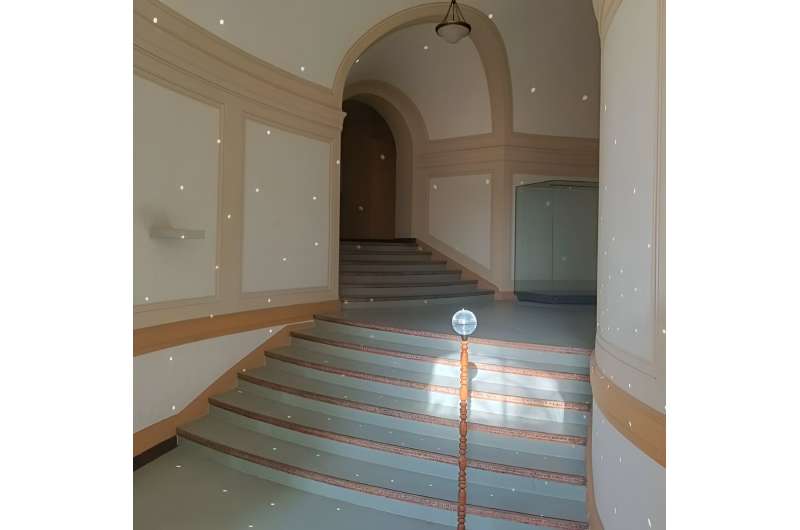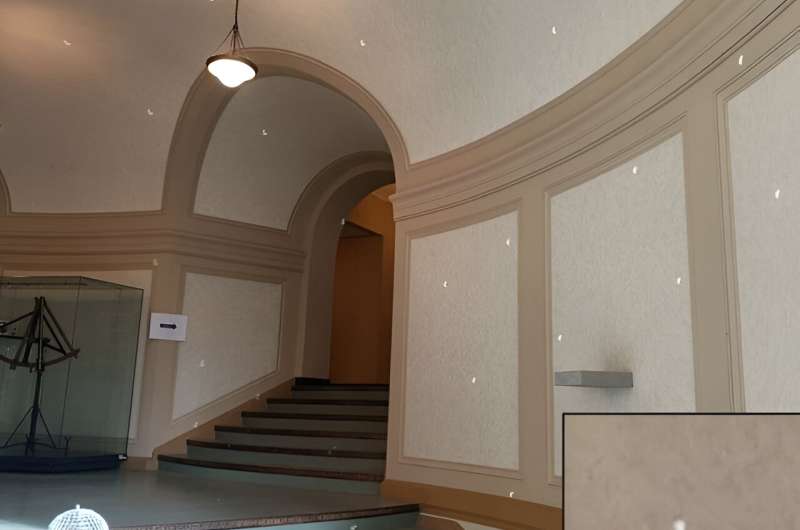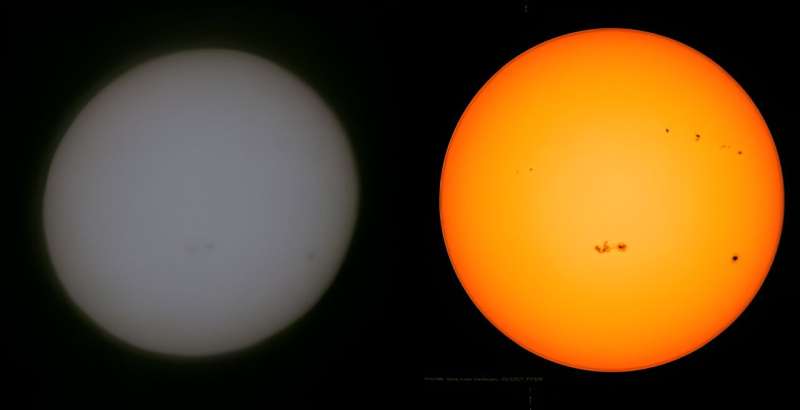This article has been reviewed according to Science X's editorial process and policies. Editors have highlighted the following attributes while ensuring the content's credibility:
fact-checked
preprint
trusted source
proofread
Want to watch the sun safely with a large group? Get a disco ball

The upcoming solar eclipses and the current high sunspot activity means it's a great time to observe the sun. Eclipses also mean that large groups of people will be together to view these events. However, rule #1 for astronomy is to never look at the sun with unprotected eyes, especially with a telescope or binoculars.
So, how can you safely show the changing sun to a large group of people without having them line up forever to look through a telescope with a solar filter, or having a lot of equipment?
A group of astronomers have a solution: Get a disco ball.
If you set up a disco ball in a sunlit room, they say, it will project tiny images of the sun onto the walls, similar to how a pinhole camera works. But a disco ball can show the state of a solar eclipse or the presence of sunspots, and allow dozens of people to see it simultaneously.
"Commercial disco balls provide a safe, effective and instructive way of observing the sun," a group of astronomers from several universities wrote in a pre-print paper published on arXiv. The paper explores the optics of solar projections with disco balls, and the researchers found that while sunspot observations are challenging, the solar disk and its changes during eclipses are "easy and fun to observe."
They also explore the disco ball's potential for observing the moon and other bright astronomical phenomena.

The astronomers note that simple pinholes have been used to observe the sun since antiquity, along with other commonly used tools for projecting eclipses, such as pinhole projectors, colanders, or tree canopies.
Unlike more traditional solar projection tools like pinhole projectors and colanders, the disco ball spreads its solar images across a room, producing recognizable solar disks from distances of about two meters and onwards, the researchers said.
"But a disco ball is able to function for large crowds because it does not merely work on the area where it casts its shadow, but across the entire illuminated hemisphere, which can project solar images across an entire room or courtyard," they wrote.
During March-May 2023, the astronomers tested out a portable disco ball as part of a permanent exhibition at a university observatory in Potsdam, Germany, with visitors in groups of all ages. When illuminated by the sun, the ball was popular with visitors, "in particular, children enjoyed the opportunity of spinning the ball and watching the reflected images move across the walls," they said.

The researchers argue the disco ball is more accessible tool for larger or socially distanced groups. It is also possible to observe large sunspots with a disco ball with small enough mirror segments. They also tested out observing the moon and its phases, but that "requires a darker environment than we have yet been able to achieve."
The list of advantages of a disco ball goes on: "Additionally, it does not need to be pointed or moved to project the sun, as new segments get illuminated as the sun moves out of the older ones. This means that it is enough to simply place a disco ball close to a window in order to fill a large part of the space with solar projections. In fact, the disco ball encourages a crowd to disperse, as they walk towards the walls to look at the projected images."
With the annular eclipse coming up on October 14, 2023 and a total solar eclipse on April 8, 2024, the astronomers said a disco ball is a safe way for larger groups of people to view these events and share them together.
"We believe that the disco ball is a versatile and engaging tool for educational purposes," the researchers wrote, "deserving wider use both for classroom demonstrations and for public events."
More information: Robert J. Cumming et al, Why every observatory needs a disco ball, arXiv (2023). DOI: 10.48550/arxiv.2309.14173
Journal information: arXiv
Provided by Universe Today

















